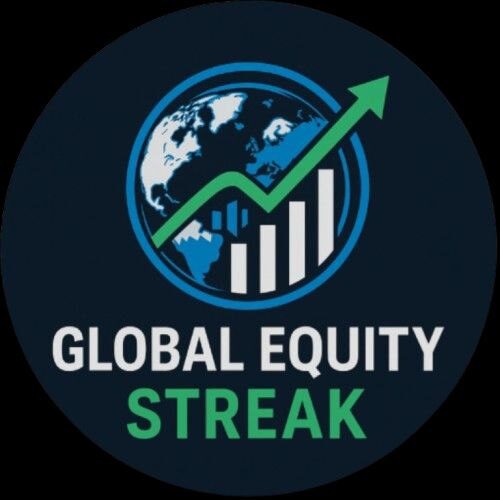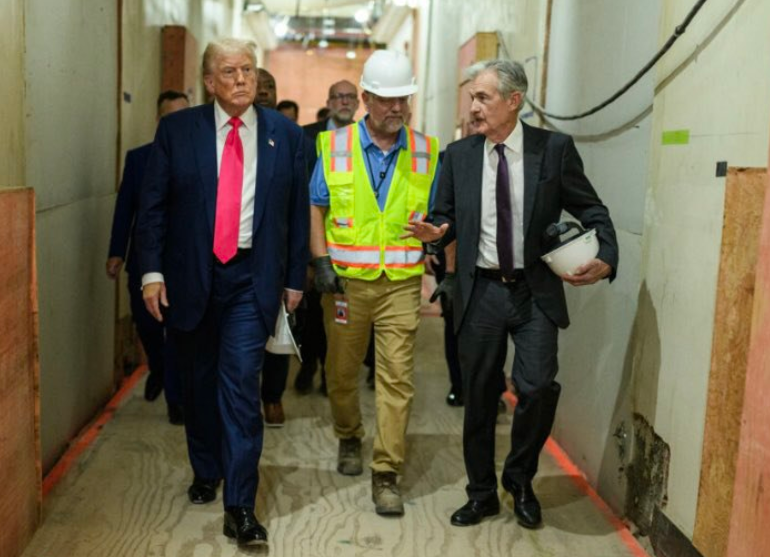Global investors are bracing for Federal Reserve Chair Jerome Powell’s highly anticipated Jackson Hole speech, a defining moment for U.S. monetary policy amid tariff wars, surging bankruptcies, and an affordability crisis in housing. With President Donald Trump ramping up pressure for immediate rate cuts and the Fed balancing political independence with economic realities, Powell’s words could signal whether relief is coming in September. From commercial real estate risks to the $1.8 trillion federal deficit, the stakes have rarely been higher, making this year’s Jackson Hole meeting one of the most pivotal in recent history.
Investors Brace for Powell’s Jackson Hole Speech Amid Tariff Tensions
As global investors turn their attention to the annual Jackson Hole Economic Symposium, all eyes are on Federal Reserve Chair Jerome Powell, whose upcoming speech could shape expectations for U.S. monetary policy in the months ahead. The event comes at a pivotal moment for the economy, with tariff tensions intensifying, the labor market showing signs of cooling, and rising political pressure from President Donald Trump.
The stakes could hardly be higher. Markets are looking for any indication of whether the Fed will cut rates in September, especially as businesses and consumers grapple with the twin pressures of elevated borrowing costs and tariff-induced price hikes. While Powell is not expected to directly announce a policy move at Jackson Hole , his tone and wording will be parsed for clues on the Fed’s next steps.
Housing Affordability Crisis and the Case for Lower Rates
One of the most pressing issues is the state of the U.S. housing market. According to analysts, existing homes are now priced $33,000 higher than new homes, largely because homeowners who locked in ultra-low 3% mortgage rates a year ago are reluctant to sell and take on a new mortgage at today’s 7% rates. This lock-in effect has contributed to a supply crunch and pushed affordability to its worst level on record.
The ripple effects extend beyond homebuyers. Businesses, particularly small and mid-sized firms, are struggling with the high cost of borrowing. Affordable capital is essential for investing in new machinery, expanding operations, and hiring workers. Many economists argue that lowering interest rates could relieve these pressures and help stimulate growth.
Powell has shown a willingness in the past to pivot toward looser policy under similar conditions. At last year’s Jackson Hole conference, his speech signaled a dovish turn that preceded a significant 50-basis-point rate cut. Market participants wonder if he may take a similar approach this year, despite mixed economic data such as a temporary spike in producer prices.
Trump’s Pressure Campaign and the Fed’s Independence
Overlaying the economic debate is the political tension between the White House and the Fed. President Trump has been outspoken in his calls for Powell to lower rates, citing the need to support growth and manage tariff fallout. However, analysts believe Powell will avoid giving the impression that the Fed is bowing to political pressure.
Some argue Powell will go out of his way at Jackson Hole to sound neutral, resisting Trump’s demands even if a rate cut is ultimately delivered in September. As one commentator put it, Powell may act like a “mother hen,” sitting cautiously on policy “eggs” and refusing to give away any signs of what’s to come. This balancing act between political independence and economic necessity could define Powell’s speech.
Tariffs and Consumer Strain
The backdrop of tariff tensions adds another layer of complexity. With the U.S. importing $3.3 trillion worth of goods annually, a 13–14% effective tariff rate equates to roughly $450 billion in additional costs. Analysts estimate that even if just one-third of these costs are passed on to consumers, it amounts to a 1.7% tax on household spending power.
The concern is that tariffs, unlike traditional inflation driven by excess demand, raise prices by increasing costs rather than fueling consumption. This dynamic reduces discretionary income, forcing households to cut back on spending. While some argue the impact is manageable in the context of America’s $25 trillion in annual personal income, the short-term timing of tariff hikes could intensify consumer pain before tax relief or other offsets take effect.
Corporate Bankruptcies and Commercial Real Estate Risks
Another red flag for policymakers is the surge in corporate bankruptcies. In July alone, there were 71 filings, surpassing even pandemic-era levels. For the first seven months of the year, 446 companies have filed, including several high-profile names. Rising debt burdens, tighter credit conditions, and higher interest payments are pushing firms to the brink.
Commercial real estate is also flashing warning signs. Borrowers with adjustable-rate mortgages are facing payment shocks, with many uncertain how much longer they can manage. Given Trump’s real estate background, this is likely an area he is closely monitoring as well.
Long-Term Risks and Deficit Pressures
Beyond immediate challenges, the U.S. fiscal situation is adding to investor unease. With a federal deficit running above $1.8 trillion this year and interest expenses exceeding $100 billion per month, the sustainability of government borrowing is under scrutiny. Roughly one-third of publicly held debt is rolling over in the near term, raising fears that long-term interest rates could surge if investors lose confidence in the Fed’s control of inflation and borrowing costs.
So far, markets have shown restraint, but many believe it is only a matter of time before fiscal pressures push rates higher. Some commentators warn that the U.S. may be heading toward a European-style system of layered consumption and income taxes to fund entitlement programs such as Social Security and Medicare, particularly as tariffs morph into a quasi-value-added tax.

Conclusion: A Defining Jackson Hole Moment
As Jackson Hole approaches, the debate over monetary policy, tariffs, and fiscal sustainability has rarely been more urgent. Investors are torn between the need for immediate rate cuts to support growth and concerns about longer-term inflation and deficit dynamics.
Jerome Powell faces a delicate task: signaling flexibility to address economic headwinds while maintaining the Fed’s independence in the face of political pressure. Whether he leans dovish, hawkish, or chooses to remain non-committal, his words will shape expectations not just for the September meeting but for the broader trajectory of U.S. monetary policy heading into a volatile election season.jackson hole,jackson Hole

